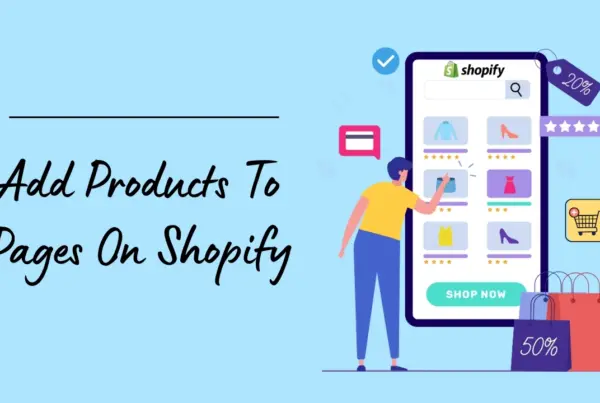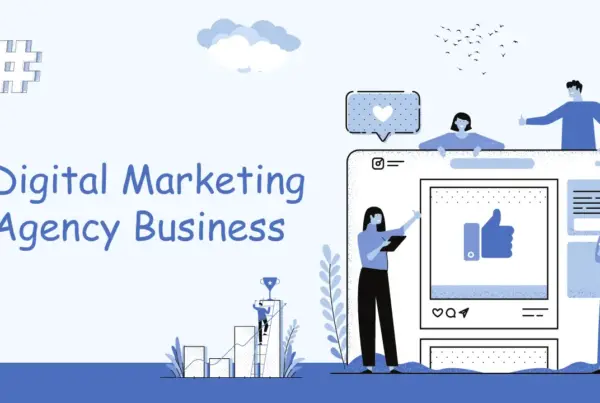Micro SaaS ideas are business concepts where a single individual can offer customized services or products to a specific niche market. Basically, it comes to serving solutions to particular demands and pain points through services or products.
According to Forbes, the worldwide SaaS market is expected to rise from $237.48 billion to $908.21 billion by 2022 to 2030. It is also expected to increase its CAGR (Compound Annual Growth Rate) to 18.7% during the same period.
As technology continues to advance, these micro SaaS ideas are confident enough to carve out their niche in various industries. And at the same time, they are ready to provide targeted solutions that meet specific needs.
The possibilities for micro SaaS innovations are endless, providing entrepreneurs with ample opportunities to make a significant impact.
Table of Contents
About Micro SaaS
Technically, the word micro simply means small scale, while SaaS stands for software as a service. So, suppose you merge them as Micro SaaS. In that case, it will define a specific task that has a small number of operations for SaaS (software as a service) applications.
In a nutshell, it’s a product that involves providing a problem’s solution in a particular niche market for a tangible gathering of customers using very few resources.
It would be safe to say that if you want to start a business with micro SaaS, you won’t need to think of an enormous budget, plus you don’t need to use a team. On a quick note, a SaaS business can be easily and freely operated by one or more owners with a small team if required.
Okay, here are some companies that use micro SaaS, like AnyTrack, SolidGigs, Plausible, Invoice, and Storemapper.
Let’s Realize the Theory of Micro SaaS
It is highly noteworthy to realize the theory of micro SaaS before giving the ideas. So, let’s talk about some examples of micro SaaS tools:
AnyTrack
AnyTrack is a real-time data platform that merges you with your marketing channels and sales. It enables seamless data automation and integration with imperative tools like CRM, Meta Pixel, Webhook, Ad Network, and Google Analytics.
SolidGigs
Suppose there is someone who wants to join a freelancing job platform that has no service fee or commission charges. In this case, SolidGigs is the best platform for them. The expert gig-hunters of this marketplace platform match the leading 1% of freelance jobs from a library of premium sources.
On a serious note, SolidGigs is not a freelancer platform but more of a lead generation tool.
Plausible
Plausible is intuitional, transparent, and open-source web analytics. Or, more specifically, it is a substitute for Google Analytics, built with privacy in mind. It is CCPA, GDPR, and PECR compliant, providing a holistic view of all data without any custom dashboards and reports.
Plutio
Suppose you are looking for an all-in-one platform to create, manage, share, collaborate, and automate your workflow. In this case, Plutio is the ideal micro SaaS tool you have ever heard of. It integrates form building, payments, proposal creation, file sharing, project collaboration, and workflow automation.
Hypefury
It is an outstanding platform that helps produce SM (social media) content with a vigorous community. It works as a personal assistant to monetize and grow your audience.
In addition, it’s a powerful app that seamlessly creates new content, boosts your audience, expands your email list, and sells more products. So, if you want to build your brand, it’s indeed your best friend.
By learning about the above examples of micro SaaS tools, we understand that the benefits of micro SaaS are endless and undefined.
These micro SaaS tools don’t just help reduce costs, reduce maintenance, or focus on a single niche market; Rather than excel in flexibility, support needs, and streamlining customer acquisition costs.
Besides, these tools also provide complete control over ownership, frequent updates, remove location barriers, and enable improvements.
Micro SaaS Ideas: Unleashing Innovation for Niche Markets
Micro SaaS has emerged as a beacon of innovation in the technology industry with its targeted approach and scalability.
The demand is clear, the potential is vast, and now is the perfect time to explore and invest in these micro SaaS ideas that pave the way for a smarter, more connected future.
1. Automated Social Media Scheduler
Monetization Model: Subscription plans based on the number of social media accounts and posts, with additional charges for premium features.
MVP Build Time: Approximately 2-3 months.
MVP Build Cost: Estimated at $10,000 – $15,000, factoring in development, API integration, and testing.
Successful Example: Buffer, a pioneer in social media scheduling, showcases the potential of this model with its user-friendly interface and robust features.
In an era where online presence is paramount, an Automated Social Media Scheduler is no longer a luxury but a necessity. This micro SaaS tool is designed to simplify the lives of social media managers, marketers, and influencers by automating the scheduling process.
The demand is evident as businesses seek efficient ways to maintain a consistent online presence without compromising engagement metrics. As the digital landscape continues to evolve, the need for a reliable social media scheduling solution becomes increasingly crucial for staying ahead in the competitive market.
Challenges
API Restrictions: Dealing with limitations and restrictions imposed by various social media platforms.
Content Variety: Ensuring diverse content types (images, videos, captions) can be scheduled seamlessly.
Real-time Updates: Providing real-time updates without compromising on server load and performance.
Cross-Platform Integration: Developing a solution that seamlessly integrates with multiple social media platforms.
Analytics Accuracy: Ensuring accurate analytics for post engagement and audience insights.
2. Expense Tracker for Freelancers
Monetization Model: Freemium model with essential features for free and premium features for in-depth expense tracking and reporting.
MVP Build Time: 3-4 months, considering the complexity of expense tracking algorithms and user interface.
MVP Build Cost: Estimated at $15,000 – $20,000, encompassing development, security measures, and initial marketing efforts.
Successful Example: Expensify has set the benchmark for expense tracking with its user-friendly app and advanced features.
It is a fact that freelancers juggling multiple projects often find managing expenses to be a daunting task. The need for a streamlined solution fuels the demand for an expense tracker for freelancers. Which not only records expenses but also provides insights for financial planning.
As the gig economy continues to flourish, freelancers and independent contractors actively seek tools to make managing their finances more manageable. This makes the micro SaaS concept a valuable asset in the modern business landscape.
Challenges
Bank Integration: Ensuring seamless integration with various banks for automatic expense categorization.
Security Compliance: Adhering to strict security standards to safeguard users’ financial data.
Receipt Scanning Accuracy: Developing robust algorithms for accurate receipt scanning and data extraction.
Cross-Platform Compatibility: Ensuring the application works seamlessly across devices and operating systems.
Budgeting Features: Incorporating advanced budgeting features for comprehensive financial planning.
3. Virtual Event Management Platform
Monetization Model: Event-based pricing and customization options for specific features based on user requirements.
MVP Build Time: 4-5 months, considering the complexity of integrating various features like virtual networking, live streaming, and participant engagement tools.
MVP Build Cost: Estimated at $20,000 – $25,000, including development, testing, and initial marketing efforts.
Successful Example: Hopin has revolutionized virtual events, proving the effectiveness and scalability of this concept.
The surge in remote work and global connectivity has elevated the demand for Virtual Event Management Platforms. Businesses, conferences, and trade shows now seek comprehensive solutions replicating the in-person event experience.
As the world adapts to a hybrid model of events, the need for a versatile and efficient Virtual Event Management Platform becomes evident. This idea not only addresses the current demand but also positions itself as a vital tool for the future of event management.
Challenges
User Experience: Ensuring a seamless and engaging user experience for virtual participants.
Platform Scalability: Building a platform that can handle events of various sizes without compromising on performance.
Security Measures: Implementing robust security features to prevent unauthorized access and data breaches.
Integration Challenges: Integrating with various third-party tools and platforms for comprehensive event management.
Technical Support: Providing timely and effective technical support to event organizers and participants.
4. AI-Powered Resume Builder
Monetization Model: Monthly subscription for premium templates and AI-enhanced features.
MVP Build Time: 3-4 months, involving AI algorithm development and template creation.
MVP Build Cost: Estimated at $15,000 – $20,000, covering AI implementation, UI/UX design, and testing.
Successful Example: Enhancv has set the standard for AI-driven resume building, showcasing the demand for personalized and impactful resumes.
In the competitive job market, a standout resume can make all the difference. The demand for an AI-powered Resume Builder is propelled by the need for job seekers to create impactful resumes that resonate with employers.
As business AI tools continue to evolve, individuals are increasingly looking for tools that not only streamline the resume-building process but also enhance their chances of landing the desired job. This concept aligns with the ever-growing emphasis on personal branding in the professional sphere.
Challenges
AI Accuracy: Developing AI algorithms that accurately analyze and enhance resumes.
Privacy Concerns: Addressing user concerns regarding the security and privacy of personal information.
Template Diversity: Offering a wide range of templates catering to various industries and professions.
Integration with Job Platforms: Integrating with popular job platforms for seamless application processes.
User Education: Ensuring users understand and utilize the AI features effectively.
5. Local Business Loyalty Program
Monetization Model: Commission on increased sales driven through the loyalty program.
MVP Build Time: 3-4 months, including features for customer engagement and rewards tracking.
MVP Build Cost: Estimated at $15,000 – $20,000, factoring in loyalty program algorithm development and UI/UX design.
Successful Example: Belly has successfully implemented a local business loyalty program, proving the effectiveness of customer retention through rewards.
In the era of online shopping, fostering customer loyalty for local businesses is more crucial than ever. The Local Business Loyalty Program meets this demand by providing a customizable solution for small businesses to retain and attract customers.
As consumers increasingly prioritize supporting local establishments, the need for effective loyalty programs tailored to local businesses becomes apparent. This concept addresses the demand for customer retention tools and contributes to the growth of the local business ecosystem.
Challenges
Merchant Onboarding: Simplifying the onboarding process for local businesses to join the loyalty program.
Customer Engagement: Encouraging active participation from customers through rewards and incentives.
Program Scalability: Designing a program that can scale with the growth of participating businesses.
Data Security: Ensuring the security of customer data and transaction information.
Competing with Large Chains: Differentiating the program to compete with larger businesses’ loyalty programs.
6. Subscription Box Management System
Monetization Model: Subscription-based revenue with tiered plans based on the number of subscribers.
MVP Build Time: 4-5 months, incorporating features for subscription management, inventory tracking, and customer communication.
MVP Build Cost: Estimated at $20,000 – $25,000, encompassing subscription management system development and integration.
Successful Example: Cratejoy has successfully capitalized on the subscription box trend, demonstrating the viability of this micro SaaS concept.
The Subscription Box Management System addresses the growing demand for personalized and curated shopping experiences. As subscription boxes gain popularity across various niches, businesses are actively seeking tools that simplify the management process.
This concept not only streamlines operations for subscription box businesses but also aligns with the consumer trend of enjoying carefully curated products delivered to their doorstep. The demand for such a system is evident in the success of existing subscription box services and the continual growth of this market segment.
Challenges
Inventory Management: Ensuring accurate tracking and management of subscription box contents.
Customer Retention Tools: Implementing features to retain subscribers and reduce churn rates.
Customization Options: Providing a platform that allows for easy customization of subscription boxes.
Shipping Logistics: Addressing challenges related to shipping and fulfillment for various products.
Integration with E-commerce Platforms: Integrating seamlessly with popular eCommerce platforms for broader reach.
7. AI-Powered Content Recommendation Engine
Monetization Model: Licensing to content platforms and media outlets.
MVP Build Time: 5-6 months, incorporating machine learning algorithms for accurate content recommendations.
MVP Build Cost: Estimated at $25,000 – $30,000, covering AI development, integration, and testing.
Successful Example: Taboola has carved a niche in the content recommendation space, showcasing the demand for personalized content discovery.
As the digital landscape becomes saturated with content, the need for an AI-driven Content Recommendation Engine is more pronounced than ever. The users crave personalized experiences, and content providers aim to deliver tailored recommendations to keep audiences engaged.
This is one of the leading AI business ideas, catering to the demand for personalized content discovery and empowering content creators to enhance user engagement and retention. The success of existing platforms employing similar technology underscores the growing importance of personalized content experiences.
Challenges
User Privacy: Addressing concerns about user privacy while collecting and utilizing data for recommendations.
Adapting to User Behavior: Developing algorithms that adapt to changing user preferences and behaviors.
Diverse Content Types: Ensuring the engine recommends various content types, including articles, videos, and images.
Quality Control: Implementing mechanisms to filter out low-quality or inappropriate content.
Integration with Multiple Platforms: Ensuring seamless integration with various content management systems and platforms.
8. Task Automation for E-commerce Sellers
Monetization Model: Subscription plans based on the number of automated tasks and order volume.
MVP Build Time: 3-4 months, including integration with popular eCommerce platforms and automation script development.
MVP Build Cost: Estimated at $15,000 – $20,000, covering eCommerce platform API integration and task automation features.
Successful Example: Zapier has demonstrated the effectiveness of task automation across various core business activities. This aligns with current market demands and positions itself as a valuable asset in the eCommerce ecosystem.
Challenges:
E-commerce Platform Compatibility: Ensuring compatibility with a wide range of eCommerce platforms and marketplaces.
Order Variability: Developing automation scripts that adapt to different types of products and order variations.
Real-time Order Updates: Providing real-time updates on order status and inventory changes.
Customization Options: Allowing users to customize automation workflows to suit their specific needs.
Error Handling: Implementing practical error handling mechanisms to prevent disruptions in automated processes.
9. Health and Wellness Tracker for Remote Teams
Monetization Model: Corporate licenses for team-wide wellness tracking and reporting.
MVP Build Time: 4-5 months, incorporating features for individual and team health tracking.
MVP Build Cost: Estimated at $20,000 – $25,000, covering the development of health tracking algorithms and user interface design.
Successful Example: Wellable has successfully addressed the need for employee wellness tracking, indicating the demand for such solutions.
Health and wellness trackers for remote teams address a critical need for organizations to monitor and improve the well-being of their distributed workforce. The demand for such equipment is driven by the perception that employee health directly affects productivity and job satisfaction.
It aligns with the growing emphasis on employee well-being but also positions itself as a valuable tool for companies seeking to create a healthy and engaged remote work environment.
Challenges:
Data Privacy Compliance: Ensuring the platform complies with strict data privacy regulations related to health information.
Employee Engagement: Encouraging active participation from remote team members in wellness activities.
Integration with Health Devices: Integrating with various health tracking devices for accurate data collection.
Scalability: Building a platform that can scale with the size of remote teams and organizations.
Corporate Buy-In: Convincing corporate entities of the long-term benefits of investing in employee wellness.
10. Personal Cyber Security Assistant
Monetization Model: Subscription for real-time threat monitoring and advice.
MVP Build Time: 5-6 months, incorporating machine learning algorithms for threat detection and prevention.
MVP Build Cost: Estimated at $25,000 – $30,000, covering cybersecurity algorithm development, integration, and testing.
Successful Example: Dashlane has successfully implemented password management and cybersecurity features, showcasing the demand for personal cybersecurity solutions.
In an era where online security is paramount, the Personal Cybersecurity Assistant meets the demand for individualized protection against cyber threats. With cyber-attacks on the rise, individuals are increasingly seeking tools that go beyond traditional antivirus software.
It only addresses the immediate need for personal cyber security and aligns with the growing awareness of online security threats.
Challenges:
Real-Time Threat Updates: Providing real-time updates on emerging cybersecurity threats.
User-Friendly Interface: Ensuring the application is user-friendly for individuals with varying levels of technical expertise.
Cross-Platform Compatibility: Developing a solution that works seamlessly across multiple devices and operating systems.
Educating Users: Educating users about potential threats and best practices for cybersecurity.
Adapting to Evolving Threats: Staying ahead of constantly evolving cybersecurity threats and attack vectors.
11. AI-Enhanced Language Learning Platform
Monetization Model: Subscription for personalized language learning paths and premium features.
MVP Build Time: 5-6 months, incorporating AI-driven language assessment and personalized learning algorithms.
MVP Build Cost: Estimated at $25,000 – $30,000, covering AI implementation, content development, and user interface design.
Successful Example: Duolingo has successfully integrated AI into language learning, indicating the demand for personalized and effective language learning platforms.
With globalization and the importance of multilingualism, the AI-Enhanced Language Learning Platform addresses the growing demand for personalized language learning experiences. Individuals seeking to learn new languages are increasingly turning to technology for efficient and tailored solutions.
It’s an authentic idea that has the current demand for language learning platforms. It positions itself as an innovative tool for personalized education in the digital age.
Challenges:
Accurate Language Assessment: Developing algorithms that accurately assess users’ language proficiency and learning needs.
Content Diversity: Providing a diverse range of language learning materials, including audio, visual, and interactive content.
User Engagement: Encouraging consistent user engagement through personalized learning paths.
Integration with Education Systems: Collaborating with educational institutions and integrating with formal language learning programs.
Gamification without Distraction: Incorporating gamification elements to enhance user experience without distracting from the learning process.
12. Custom Merchandise Design Tool
Monetization Model: Transaction-based revenue from merchandise sales and subscription plans for advanced design features.
MVP Build Time: 4-5 months, including features for customizable designs, order tracking, and integration with printing services.
MVP Build Cost: Estimated at $20,000 – $25,000, covering design tool development, integration, and initial marketing efforts.
Successful Example: Printful has successfully implemented a custom merchandise design tool, showcasing the demand for personalized merchandise creation.
As eCommerce continues to flourish, businesses and individuals are increasingly seeking ways to stand out through personalized merchandise. The Custom Merchandise Design Tool caters to this demand, offering users the ability to create unique and eye-catching designs for various products.
This idea aligns with the current trend of personalized products and positions itself as a valuable asset for businesses looking to enhance their brand visibility.
Challenges:
Print Quality Assurance: Ensuring the design tool produces high-quality prints on various merchandise items.
Integration with E-commerce Platforms: Seamless integration with popular eCommerce platforms for easy merchandise sales.
Design Complexity: Providing advanced design features while maintaining a user-friendly interface.
Supply Chain Management: Managing inventory and order fulfillment efficiently.
User Education: Educating users on design capabilities and the potential of the platform.
13. Subscription-Based Recipe Management System
Monetization Model: Monthly subscription for advanced recipe features and premium content.
MVP Build Time: 3-4 months, including features for recipe organization, meal planning, and nutritional information.
MVP Build Cost: Estimated at $15,000 – $20,000, covering recipe management system development, content creation, and testing.
Successful Example: Paprika has successfully implemented a subscription-based recipe management system, showcasing the demand for organized and feature-rich culinary tools.
In a world where culinary creativity is celebrated, the Subscription-Based Recipe Management System addresses the demand for efficient and personalized meal planning. As individuals become more conscious of their dietary choices, the need for a comprehensive recipe management system is evident.
This recipe management system idea caters to the growing interest in home cooking and positions itself as a valuable tool for food enthusiasts and professionals alike.
Challenges:
Ingredient Database: Maintaining an extensive and accurate database of ingredients for recipe creation.
Integration with Grocery Platforms: Seamless integration with popular grocery and shopping platforms for ingredient procurement.
User-Friendly Interface: Ensuring a user-friendly platform for both novice and experienced cooks.
Meal Planning Algorithms: Developing algorithms for efficient and personalized meal planning based on user preferences.
Nutritional Analysis: Providing accurate nutritional information for recipes.
14. Automated Customer Feedback Analysis
Monetization Model: SaaS subscription for sentiment analysis, actionable insights, and customizable reporting.
MVP Build Time: 4-5 months, incorporating natural language processing algorithms for feedback analysis.
MVP Build Cost: Estimated at $20,000 – $25,000, covering feedback analysis system development, integration, and initial marketing efforts.
Successful Example: Medallia has successfully implemented automated customer feedback analysis, showcasing the demand for data-driven customer experience management.
The Automated Customer Feedback Analysis addresses the growing demand for actionable insights derived from customer interactions in a customer-centric business landscape. As businesses strive to enhance customer experience, the need for a tool that efficiently analyzes and interprets customer feedback becomes crucial.
This automated customer feedback analysis idea aligns with the current trend of data-driven decision-making and positions itself as an essential asset for businesses aiming to stay attuned to their customers’ needs.
Challenges:
Multichannel Feedback Integration: Integrating and analyzing feedback from various channels, including social media, emails, and surveys.
Real-Time Analysis: Providing real-time insights into customer sentiment for prompt decision-making.
Actionable Recommendations: Develop algorithms that provide actionable recommendations for improving customer experience.
Data Security: Ensuring the security and privacy of customer feedback data.
Integration with CRM Systems: Seamless integration with popular Customer Relationship Management (CRM) systems for comprehensive analysis.
Conclusion
In the evolving landscape of technology and business, the above-discussed micro SaaS ideas stand as beacons of innovation, addressing specific needs with agility and precision. These micro SaaS ventures emerge as groundbreaking ideas and catalysts for transformative change.
The innovations mentioned above are not only about tools or software; they are simplifying the way of regular life by ensuring online security, enhancing team collaboration, driving growth, and much more.
It cannot be ignored that organizations demand efficiency, individuals desire personalized experiences, and international markets insist on intelligent solutions.




